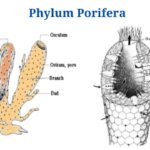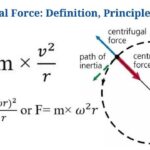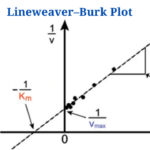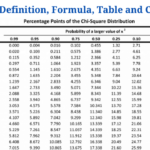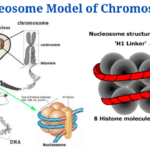Heterotrophs Definition
Heterotrophs are species that do not manufacture their own food and rely on the food and energy of other organisms.
- Heterotrophs are organisms that are different from autotrophs in that they prepare their own food as well as feed heterotrophs.
- The term heterotroph is made up of two words: “hetero” means “others,” and “troph” means “food,” implying that these organisms eat other organisms.
- In the environment, heterotrophs are also known as consumers because they eat food prepared by autotrophs and form the higher trophic levels in the food chain.
- Heterotrophs, unlike autotrophs, do not have systems for reducing carbon sources. These organisms absorb complex macromolecules from producers and, with the help of enzymes, break them down into simpler components.
- Heterotrophs receive reduced organic molecules from autotrophs and oxidise them for energy production.
- Despite the fact that most heterotrophs rely on autotrophs for both energy and food, certain heterotrophs obtain energy from solar radiation or chemical processes.
- Heterotrophs play a vital role in the ecosystem since they provide a significant amount of biomass and are responsible for the transfer of energy and biomass along the food chain.
- Heterotrophs are divided into three categories of consumers: primary, secondary, and tertiary. Heterotrophs also make up the food chain’s decomposers, which feed on the dead and decaying biomass in the environment.
- Heterotrophs have a variety of complexities and systems that allow them to obtain energy and food from autotrophs.
Image Created with BioRender
Types of Heterotrophs based on the energy source
1. Photoheterotrophs
- Photoheterotrophs, also known as heterotrophic phototrophs, are a type of phototroph that gets its energy from the sun but eats autotrophs.
- These heterotrophs can’t use carbon dioxide as a carbon source, thus they need to get their carbon from other sources. Holozoic creatures are another term for them.
- To generate an electrochemical gradient that provides molecular energy, these photoheterotrophs use mechanisms like electron transport chains or direct proton pumping.
- Photoheterotrophs can generate ATPs by phosphorylation, but they rely on organic chemicals and biomolecules for growth and survival.
- Photoheterotrophy is a significant lifestyle for organisms living in locations where the availability of energy-rich niches limits their growth and survival.
- Photoheterotrophs are most typically found in surface water with high populations of living organisms. The ability to generate energy from solar energy reduces their need on breathing.
- Heliorestis baculata, Heliorestis convulata, and Synechococcus elongatus are examples of photoheterotrophs.
2. Chemoheterotrophs
- Chemoheterotrophs are heterotrophs that get their energy from chemical molecules and eat autotrophic food.
- Chemotrophs, unlike phototrophs, cannot use sun energy and must rely on energy acquired from reduced carbon molecules through respiration.
- Although some chemoheterotrophs can get their energy from inorganic chemical compounds, they still need organic chemicals to generate biomass and make proteins.
- Chemoheterotrophs are a broader category of heterotrophic organisms that encompasses species from all domains.
- Chemoheterotrophs, which take up organic resources from plants and other autotrophs and cycle them through the food web, are critical to the ecosystem’s basic functioning.
Types of Heterotrophs based on electron source
1. Organotrophs
- Organotrophs are heterotrophic organisms that use organic substances for both energy and food.
- Internal respiration provides energy to these creatures, which is derived from the oxidation of organic substances.
- The organic substance serves as a source of electrons in organotrophs, which then transit via the electron transport chain to form ATPs.
- All animals, as well as some microorganisms, are organotrophs. Bacteria that are organotrophic can be aerobic or anaerobic.
2. Lithotrophs
- Lithotrophs are heterotrophs that get their electrons from inorganic chemicals or geological processes.
- Elemental sulphur and elemental gases are the most common inorganic substances utilised as electron sources.
- Because inorganic molecules, unlike bigger organic sugars, do not produce enough energy, most lithotrophs are tiny bacteria.
- These can create electrons by oxidising electron donors, which are subsequently routed through electron respiratory channels to form ATP.
- Unicellular species are the only known lithotropic organisms; however, multicellular organisms may derive energy from symbiotic relationships with unicellular organisms.
- The majority of lithotrophs live in regions with chemical food supplies, such as sea floors or subsurface water sources.
Examples of Heterotrophs
1. Fungi
- Fungi are a type of eukaryote that feeds and gets their energy from dead and decaying substances.
- Fungi are organoheterotrophic creatures that get their energy from complex organic molecules.
- Fungi are the decomposers in the food chain, consuming dead and decaying creatures and releasing simpler chemicals that can be consumed by autotrophs.
- These are mainly found in dry and arid areas, and they occur in the soil, which contains the majority of dead and decaying components.
- There are several fungal species that can be aerobic or anaerobic, and they produce varied levels of energy from organic matter depending on the presence of oxygen.
2 . Photoheterotrophic cyanobacteria
- Photoheterotrophic cyanobacteria are a type of cyanobacteria with high photosynthetic efficiency and low growth demands.
- These bacteria cannot use carbon dioxide as a carbon source, but they can transfer electrons in the electron transport chain using solar radiation.
- The bacteria live in wet or wet settings, feeding on the organic compounds produced by autotrophic aquatic species.
- These are being examined more and more because of their capacity to create a lot of energy in the presence of sunshine.
3 . Iron-reducing bacteria
- Iron-reducing bacteria make energy by metabolising reduced iron to oxidised iron compounds.
- The energy generated by the process is subsequently used for carbon source absorption and metabolism.
- It has been proposed that these bacteria be utilised to decontaminate metal or metalloid-polluted surroundings.
- Iron-reducing organisms are often linked with harsh settings, but they can also be found in other places.
- The presence of inorganic chemicals in harsh conditions is responsible for the existence of these microorganisms.
4. Animals
- Animals are the most important heterotrophic group in the environment because they occupy the most trophic levels in the food chain.
- Although all animals are heterotrophic, their reliance on autotrophs varies, since some are directly dependent on autotrophs while others are indirectly dependent.
- Herbivorous animals get both energy and food from autotrophic organisms like plants and phytoplanktons.
- Carnivores, in turn, eat herbivores, implying an indirect relationship with autotrophs.
- The creatures consume the organic chemicals, which are then broken down into simpler molecules by various methods.
Heterotrophs in the food chain
- Heterotrophs, which occupy many trophic levels, are the biggest category of living organisms in the food chain.
- Consumers that directly feed on autotrophs occupy the second trophic level, which starts the energy transfer in the system.
- On the third trophic level, heterotrophs are secondary consumers who feed on primary consumers. These are the more sophisticated creatures that eat organic substances.
- Decomposers are another important group of creatures found at the ecosystem’s upper trophic levels. These are a type of heterotroph that feeds on dead and decaying materials in order to release inorganic compounds into the environment.
- Each trophic level transfers 10% of the energy, with the remainder being stored as biomass in the trophic level.
Important Viva Questions on Heterotrophs
- What are Heterotrophs, and what do they do?
- Define the term “heterotrophs.”
- What types of Heterotrophs are there?
- Give four different examples of heterotrophs.
- Heterotrophs: What Role Do They Play in the Food Chain?
Heterotrophs Citations
- Emerson D, Fleming EJ, McBeth JM. Iron-oxidizing bacteria: an environmental and genomic perspective. Annu Rev Microbiol. 2010;64:561-83. doi: 10.1146/annurev.micro.112408.134208. PMID: 20565252.
- Cockell C.S. (2011) Lithotroph. In: Gargaud M. et al. (eds) Encyclopedia of Astrobiology. Springer, Berlin, Heidelberg. https://doi.org/10.1007/978-3-642-11274-4_903
- https://readbiology.com/heterotroph/
- https://microbenotes.com/autotroph-vs-heterotroph/
- https://diffzi.com/heterotrophs-vs-autotrophs/
- https://www.scienceabc.com/nature/animals/what-are-hetretrophs.html
- http://www.fao.org/3/t0122e/t0122e03.htm
- https://biologydictionary.net/chemoheterotroph/
- https://en.wikipedia.org/wiki/Phototroph
- https://www.quora.com/What-are-lithotrophsINTERNET1%https://www.epa.gov/sites/production/files/2019-08/documents/external_carbon_surces_for_nitrogen_removal_fact_sheet_p100il8f.pdf
Related Posts
- Phylum Porifera: Classification, Characteristics, Examples
- Dissecting Microscope (Stereo Microscope) Definition, Principle, Uses, Parts
- Epithelial Tissue Vs Connective Tissue: Definition, 16+ Differences, Examples
- 29+ Differences Between Arteries and Veins
- 31+ Differences Between DNA and RNA (DNA vs RNA)
- Eukaryotic Cells: Definition, Parts, Structure, Examples
- Centrifugal Force: Definition, Principle, Formula, Examples
- Asexual Vs Sexual Reproduction: Overview, 18+ Differences, Examples
- Glandular Epithelium: Location, Structure, Functions, Examples
- 25+ Differences between Invertebrates and Vertebrates
- Lineweaver–Burk Plot
- Cilia and Flagella: Definition, Structure, Functions and Diagram
- P-value: Definition, Formula, Table and Calculation
- Nucleosome Model of Chromosome
- Northern Blot: Overview, Principle, Procedure and Results



